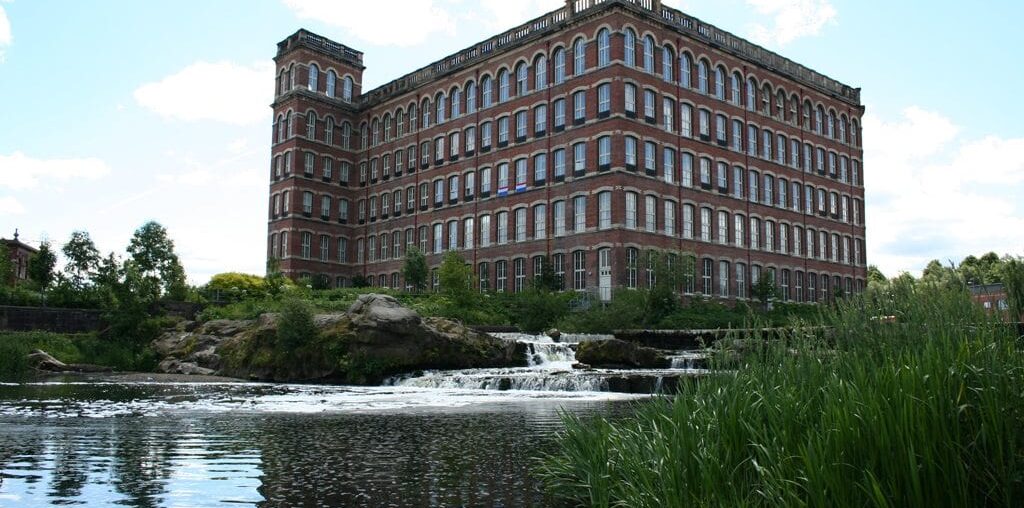Tailing the Linn
In the heart of Paisley there is a picturesque waterfall known as the Hammills. This was once described as “The little Niagara Falls” of Paisley. In the long, hot Victorian summers, this spot provided a great attraction to the young boys of the town. It was here at the “Laigh Linn” as it was locally known, that little Paisley boys learned to swim, long before the days of public baths.
In Paisley, the tradition was that swimming was first attempted in the lade above the Hammills, next to Seedhill Mills. When sufficient proficiency was attained at this part of the River Cart, the young swimmers would then attempt to swim the dangerous, deep, dark, swirling waters below the Hammill.
In dry, hot summers, it was not unusual to see scores of boys sitting astride the rocks of the waterfall, waiting to pluck up enough courage to dive into the waters below. Some even took time out to carve their names into the rock. These carvings can still be seen today, some dating back as far as the 18th century.
No boy was considered a swimmer, or a true Paisley Buddie, until he could jump or dive from the Hammills. This feat of bravado was known as “Tailing the Linn”. When the young man had swum over the deep, dangerous part of the river below the waterfall, he would proudly stand in the shallows with his arms folded, as a sign that the daring deed was done. He had proved to himself and his mates, by this unholy baptism, that he was one of the boys.
Some swimmers had narrow escapes from drowning. When Gilbert Holmes, a twelve-year old from the West-End of town, attempted to “Tail the Linn” in the summer of 1870, his shoulder hit a projecting rock. His right arm was broken and the boy could no longer swim. He sank twice in the deep waters below the Linn. He was only rescued in the nick of time by a young man named Campbell, who worked in the nearby Clark’s cotton mill.
Some boys were not so lucky. Peter Eadie, a local businessman who became Provost of Paisley, recalled that when he swam in the Hammills as a boy, “many of my young mates were drowned there”. Local newspapers often carried stories of tragedies or brave rescues.
Drone Footage of the Hammill’s:
The hero of many a rescue was a tanner called John Haran, who worked at Whitehead’s tannery near the Hammills. “When the cry of drowning reached the tannery, the tramp of heavy clogs was heard as the tanners, carrying long poles, ran at the double towards the river. Haran, fearless of his own life, went straight into the water without divesting himself of anything save his clogs. He did this, as he ran, hopping first on one foot then on the other. You could see his Glengarry bonnet heading straight for the place where the person went under.”
John Haran was credited with saving thirty lives. Such was the admiration for this man that, in 1855, he was presented with a silver pocket watch and a purse of fifty sovereigns by the grateful Paisley public.
In June 1868, when John Haran was nearly sixty years old, the local press reported on one of his brave rescues.
“On Wednesday evening about half past seven, some boys were bathing near the Hammills. One of them was seen to sink into deep water. A cry of alarm was raised and heard by John Haran. When he rushed to the riverside, he was lucky to find the spot where the boy had sunk. He eventually found the near lifeless body and took it to his house, where measures were successfully used in the boy’s recovery. The boy was later taken home by his grateful parents to Cotton Street.” The above incident, the newspaper reported, was the “thirty-first case of rescue effected by John Haran, in addition to three cases where he was successful in recovering the body after life was extinct.”
John Haran, who had spent his working life as a tanner, saved many a Paisley child’s life. It was ironic that he could not save one of his children who tragically drowned in a tannery pit in Seedhill.
The families of John Haran and the young swimmer, Peter Eadie, both prospered in Paisley. Haran’s descendants founded the glazing company which trades in Abercorn Street (still near the River Cart!). A member of the successful Eadie family became Lady Stansgate, the mother of Tony Benn the politician.






